The Award Ceremony was held at Erinji Temple, where our guests were treated to a tour of this historic temple, where Takeda Shingen and his 24 Generals are buried. We were also privileged to an exclusive Tea Ceremony, and wonderful stories from the Chief Abbot and Zen Master. https://erinji.jp/erinji.jp/
|
What a privilege to welcome distinguished members of the Scottish Samurai to Yamanashi, to hold the Scottish Samurai Awards Ceremony, and to receive the Scottish Samurai Great Shogun Award from Lord Charles Bruce, Honorary Patron of the Japan Society of Scotland, and Ronnie Watt, Founder and President of the Scottish Samurai Awards. www.scottishsamurai.org/ The Award Ceremony was held at Erinji Temple, where our guests were treated to a tour of this historic temple, where Takeda Shingen and his 24 Generals are buried. We were also privileged to an exclusive Tea Ceremony, and wonderful stories from the Chief Abbot and Zen Master. https://erinji.jp/erinji.jp/ Shakyo: Painting the Heart Sutra with a small brush Many people practice painting Buddhist Sutras to develop concentration and deep focus. It is a highly meditative activity, and can take over two hours to copy one Sutra. You have to stay focussed on the task, not only to paint the characters with attention to beauty, balance, and detail, but also so that you don't skip a character or make a mistake. Many business executives practice Shakyo for the benefits it brings in mindfulness and concentration. My teacher Ishizaki Senu Sensei has started a Shakyo Practice Circle in Nihonbashi, which I participated in and painted The Heart Sutra in Gyosho semi-cursive style.
0 Comments
Samurai of a certain status possessed a KAOU or Signature that was more than just a way of signing their name. It became a seal of authority, and in the Takeda Clan was refined to a high level of design, a talisman rich in symbolism. On August 4 we participated in an event at the Takeda Shrine, and from our booth I designed and painted Samurai Signatures for over 40 people who visited the booth. People of all ages lined up to get their name designed as a Samurai Signature. I also designed my own KAOU, based on my calligraphy name, 恒来 (Kourai).
We took eight students to participate in the Shibukawa Yaezakura Matsuri in Gunma, known in Medieval Samurai times as Joushu. http://www.city.shibukawa.lg.jp/kankou/matsuri/matsuri/p000188.html More photos to come! Several times throughout the parade I just stopped to blow the conch shell and announce our presence in Samurai style. "People of Joushu! We are not here to harm you, but to share in our Samurai Budo Mission for Education. Mastery of Sword and Letters!" Everyone from elderly people, two small children, and Mayor Akutsu of Shibukawa City came out to greet us, see and touch our Armor up close, and to take pictures together. As our students were from America, Hong Kong, Zambia, the Netherlands, Germany, and Japan, I am quite sure that we must have been the most international delegation ever to visit the city. We had a fantastic time, and on the way home stopped over at an Onsen to melt away in and fatigue from the march. Amazing scenery with for us mountains clouds and river gorgeous both on the way to and back from Gunma, and the travel back in time for our international students. Thanks to Yamazaki-san and Miyakoshi-san of the Japanese Handmade Armor Instructors Association, for arranging our participation to meet and share with Japanese people from another Prefecture. We will be back, and we will march not on, but in other Prefectures as well. We look forward to meeting you soon! https://j-yoroi.jimdo.com NHK TV Appearance William Reed is also a semi-regular guest on NHK television, broadcast live from the NHK studio headquarters in Shibuya. By showing the Samurai battle flag for which he painted the calligraphy (風林火山 Furin Kazan), Swift as the Wind, Still as the Forest, Invasive as Fire, Immovable as the Mountain; he was able to get national publicity for iCLA and Yamanashi Gakuin University. Television Personality in Yamanashi William Reed has become a television personality in Yamanashi, appearing as a commentator every week on a popular local broadcast television show called TeTeTe TV. He has a special segment on the show called, "The Blue-Eyed Samurai: William Reed reveals the heart of Japanese Culture," in which iCLA students are invited to join and be on television, visiting many fascinating places in Yamanashi Prefecture. Previous episodes include visits to a Zen Temple to experience Zen meditation, and visiting a historic and award-winning Sake Brewery.
As we get ready for second annual march in the Shingenko Matsuri, several newspaper reporters asked me, "Why do you march in Samurai Armor?"
it it is a really good question, and it led me to a really good response. although to Japanese people Samurai Armor invokes images of the Sengoku Jidai, or Civil Wars Period, in which various clans warred with each other in an effort to unify the country under their own domain, for us it has a number of additional meanings which may not be apparent to Japanese observers. Of course we are also interested in the historic reenactment, the recognition and celebration of certain elements of Samurai culture. However, the reason we march is not to fight or to conquer territory. We March to spread Under the banner of 風林火山 (Furin Kazan), "Swift as the Wind, Calm as the Foest, Penetrating as Fire, Immovable as the Mountain.", so that we can spread the idea of 文武両道 (Bunbu Ryodo), Mastery of Sword and Letters, the ideal of the Renaissance Samurai. It is significant that we march from the International College of Liberal Arts in Kofu, Yamanashi Prefecture, former home to the Takeda Clan. Martial Arts and Liberal Arts are not only compatible, they enhance each other. This is why they are an integral part of our curriculum at iCLA. And this is why we will engage in regular excursions or marches throughout the year, both inside and outside Yamanashi Prefecture. We are growing in ranks, and already getting support for our Mission from outside partners. Stay posted here in our progress. At www.icla.jp, we are starting our 2nd Handmade Samurai Armor Project @iCLA 2016. This is only open to iCLA students and professors, but I will be posting information and photos that show how the project is progressing, as well as useful links for learning more about Samurai Culture.
This year's NHK Taiga Drama Sanda Maru has proven extremely popular, and NHK for the first time has created an English language site with 5 minute video digests of each of the 50 episodes as they unfold. There is a tremendous amount of historical information, as well as photos and profiles of the cast, and interesting historical sites you can visit. A superb site and a great dramatic tale of true events. www.nhk.or.jp/sanadamaru/en/ The Samurai helmet is beautiful in color, but it's real character comes out in light and shadow. Head and foot, helmet and footware, thought and action. The project is taking shape,and there appears to be a person behind the mask.
After playing with various design suggestions for logo placement, today we came up with these for the Shingenko Matsuri flags for our group. The iCLA Logo in the middle, flanked by the Takeda Shingen Logo on both sides, balanced and almost appearing as a Samurai Helmet on top of the calligraphy, as a suit of armor.
I painted the characters for 風林火山 (Fūrinkazan), which will appear something like this on our sebata Samurai flag banners. I had the calligraphy scanned, and converted it to a white color on a blue background, in the color of YAMANASHI Gakuin University (be true to your school). At the top I have added the Takeda Shingen Family Crest, alongside the iCLA Logo.
The banner refers to four phrases from Sun Tzu's The Art of War: "as swift as wind, as silent as forest, as fierce as fire, as unshakeable as mountain." https://en.m.wikipedia.org/wiki/Fūrin_Kazan_(Taiga_drama) https://en.m.wikipedia.org/wiki/Fūrinkazan In the Shingenkou Festival in April, we will have ten such banners worn as sashimono or sebata, battle flag banners, which were attached to the back of the Samurai Armor, and usually bore the clan heraldry or symbols. https://en.m.wikipedia.org/wiki/Sashimono I will post photos once the flags are printed. |
A poem is born, or reborn?A piece of calligraphy comes to life. Short version.
May 1987? My teacher Morioka Koshu paints a Tehon for our monthly Shodo magazine in the Sogeikai in the 1980s, and of course I have kept them all as a treasure. Feb 2017 30 years later I meet Rogier Uitenboogaart in the mountains of Kochi at Yusuhara, where he himself has been making Japanese Washi paper by hand for 30 years! April 2017 Almost exactly 30 years after I first saw the Tehon shown here, my friend Iwamoto-san at iWeave kindly presents me with the work I painted in February, wonderfully mounted on a scroll, which now hangs in my office. Here is my translation of the the Chinese poem: Laughing in the Spring breeze The dancer swirls in veils of silk. This is the time to drink up! How can you leave now, When we have hardly begun? I am not sure who wrote the original Chinese poem, but I have an idea that it was 白居易 Bai_Juyi, a Tang Dynasty poet from about 1200 years ago. A poem is born, and reborn across time and many communication platforms. https://en.m.wikipedia.org/wiki/Bai_Juyi AuthorWilliam Reed is a full time professor at iCLA (International College of Liberal Arts) Yamanashi Gakuin University in Kofu City, Yamanashi Prefecture, Japan. He is a 7th-dan in Aikido, and a Shihan in both Shodo and Nanba Jutsu. He teaches these arts at iCLA, in addition to a course on Spiritual Dimensions and Traditions in the Japanese Martial Arts. Detailed Profile on the About Page. Archives
October 2018
Categories |




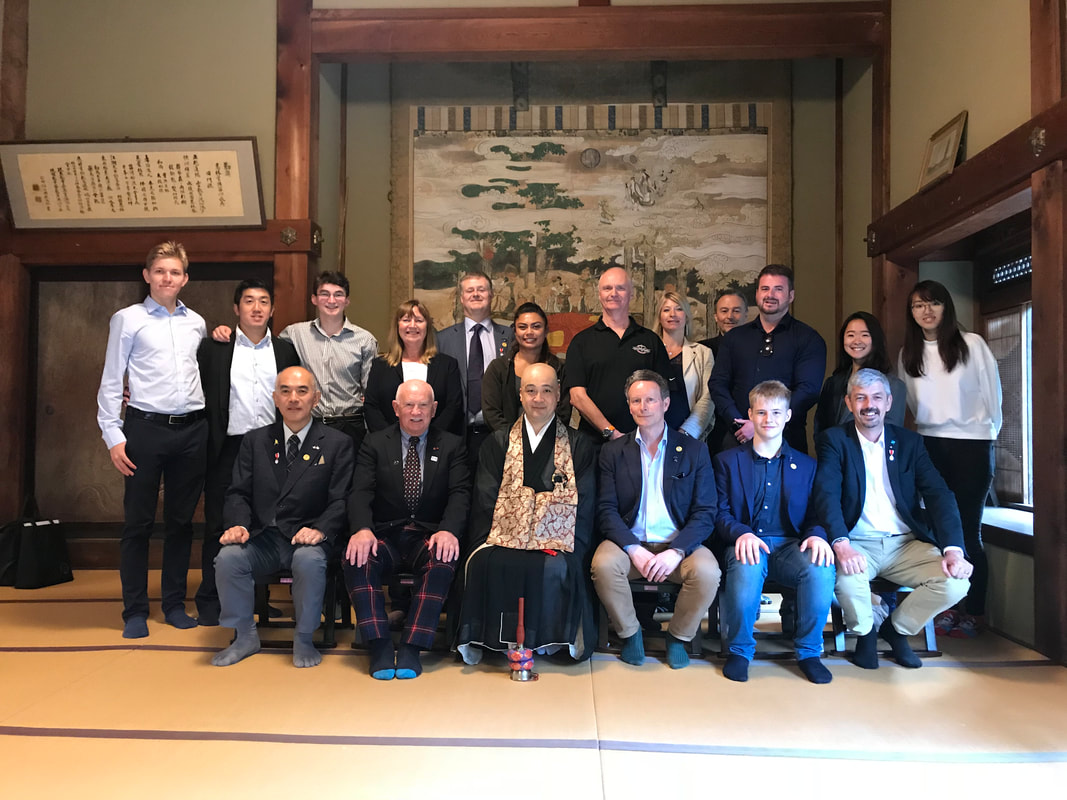






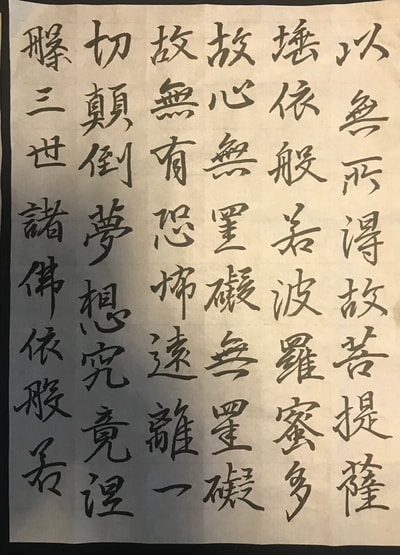
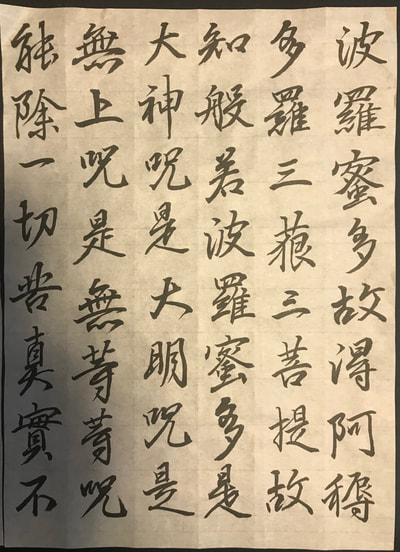

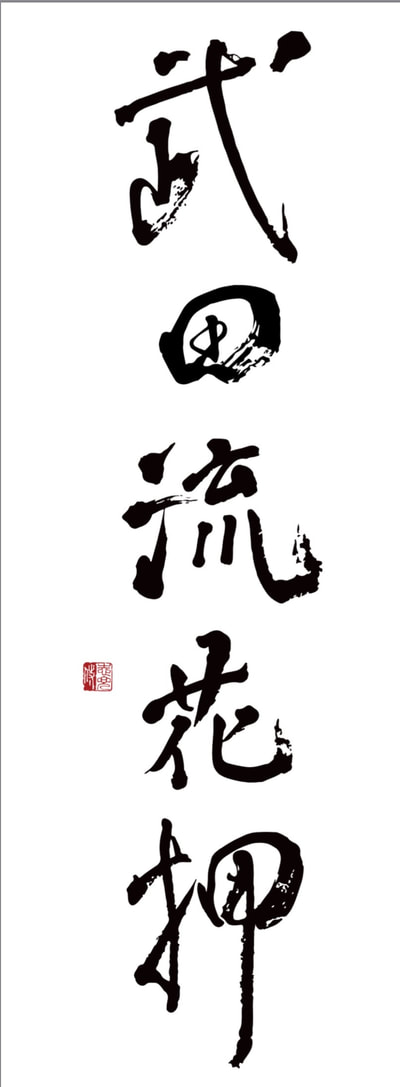
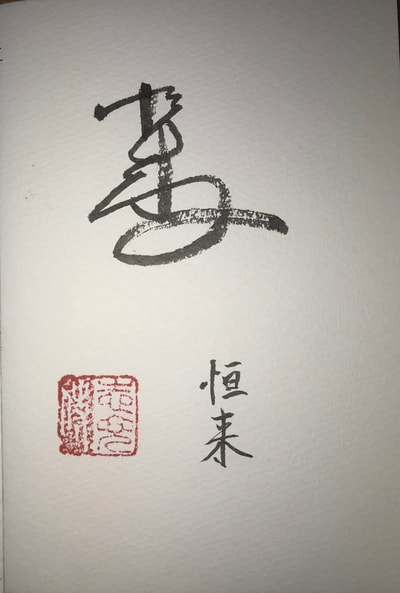

















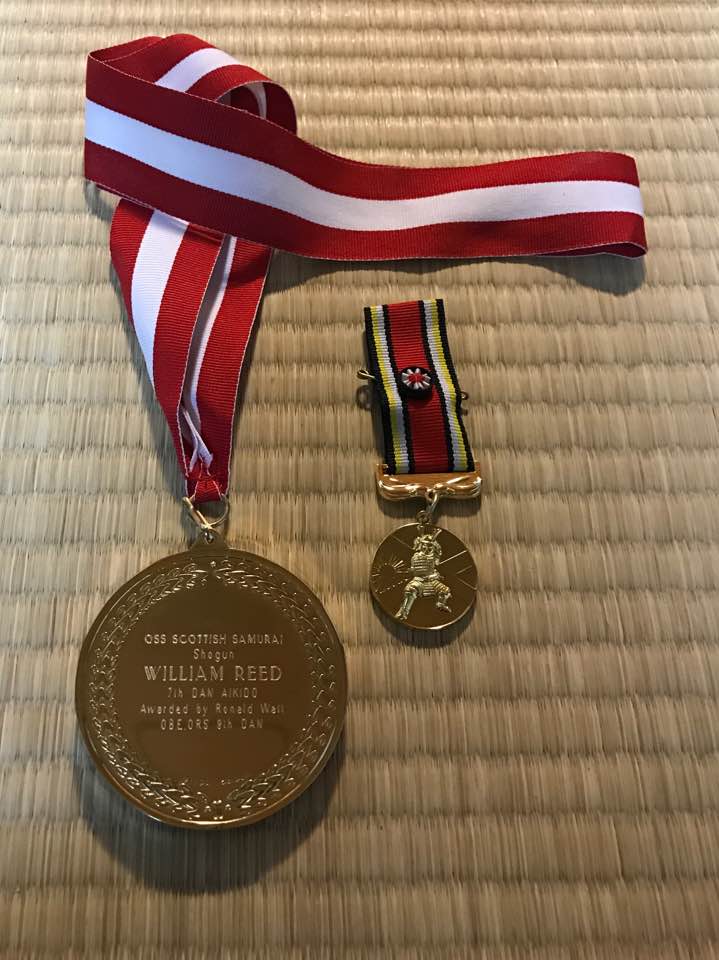








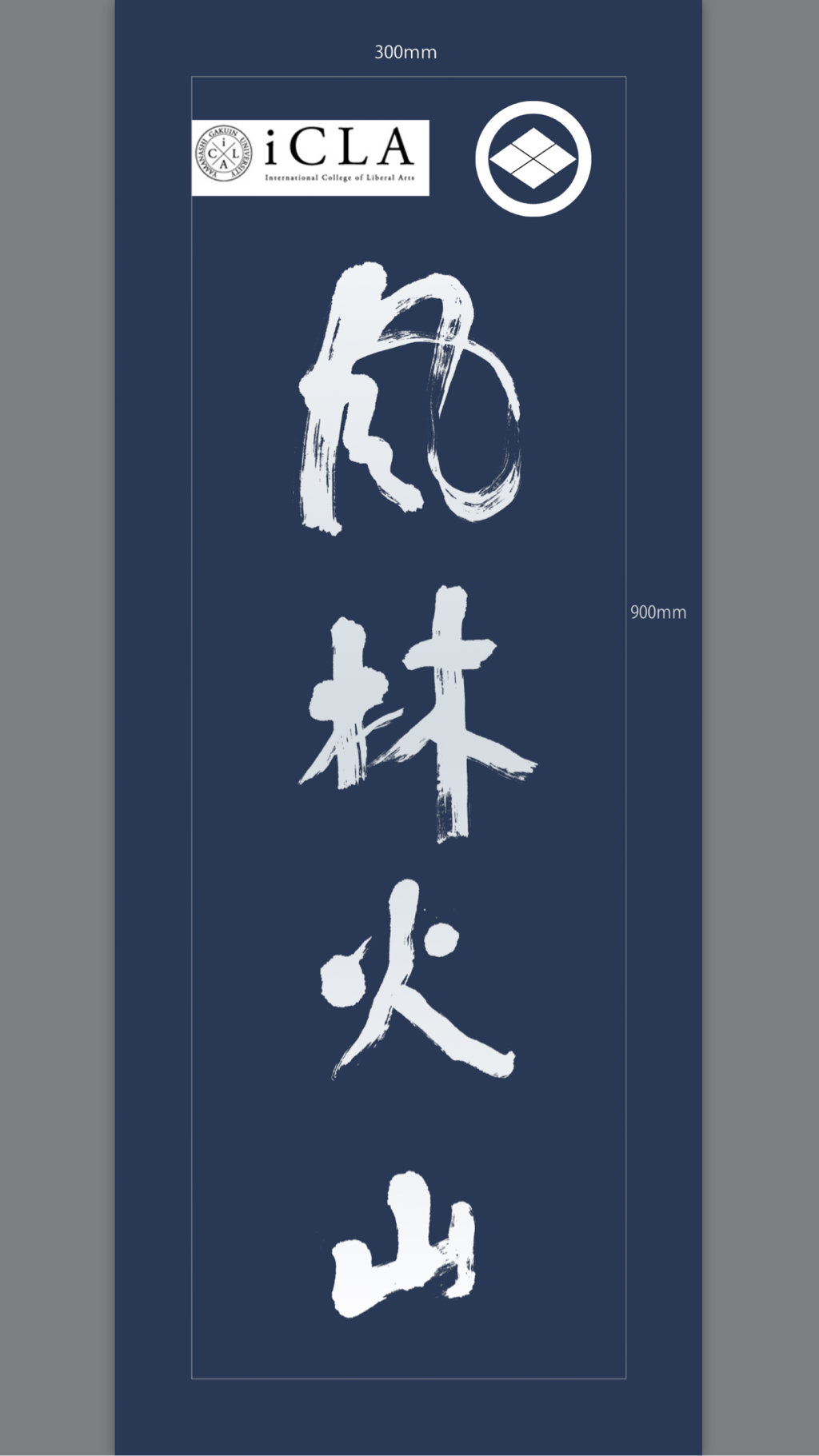


 RSS Feed
RSS Feed